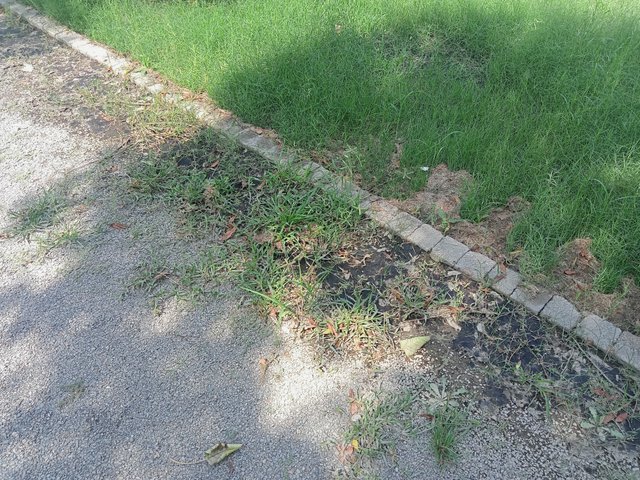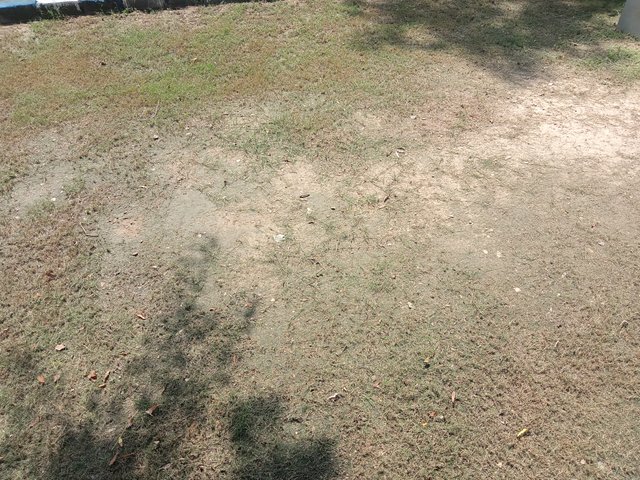
Climate change may affect agricultural productivity by different ways;
• Increasing temperatures may restrict crop growth stages which may leads to accelerated growth, yield reduction, and reduced quality.
• Too much weather alternations or heatwaves, droughts, and floods can destroy crops which may reduce yields and affect quality.
• Enhanced rainfall and snowfall patterns can affect moisture of soil which can affect availability of crops water and can cause more drought or flood challanges.
• Rise in temperatures can cause earlier springs and later autumns that may cause disturbance in normal planting and harvesting routines.
• Alternations in temperature and precipitation schedule may facilitate growth of pests and diseases so in return minimize crop yields and their quality.
• Climate change may cause soil problems like it's erosion, nutrients depletion, and salinization which can reduce crops fertility and may slower crops growth.
Extreme rains and droughts can damage crops which may leads to minimum yields, reduced quality of crops and economic losses.
| Extreme Rain |
|---|
• Water more than requirement may decrease level of oxygen in soil which makes root rot and cause deficiencies of nutrients in soil essential for growth.
• When crops suffers from oxygen deprivation by submerging in water after then it definitely leads to cell death.
• Excess rainfall always wash topsoil, nutrients, and seeds so in ways planting become fail due to this hindrance.
• Water runoff cause leaching which is lost of nutrients so in this way soil become less fertile.
| Impacts on crops |
|---|
- Reduction in germination of seeds and survival of seedling.
- Immature or restricted growth and reduction of yields
- Enhanced susceptibility to pests and diseases that may destroy crops.
- Minimized quality and reduction of shelf life

| Extreme Droughts |
|---|

• Crops may suffer from loss of water in extreme way which may reduce growth and yields because of extreme dryness.
• Rise temperatures may increase effects caused by drought.
• Minimized availability of water may restrict nutrient uptake.
• Crops which are drought stressed may attract pests.
| Impacts on crops |
|---|
- Reduction of yields and less quality production of crops.
- Immature senescence (Aging of plants)
- More susceptibility to pests and diseases
- Less seed availability and viability
.

Emerging of new pests and diseases because of climate change comes stage by stage in following way;
| Stage 1 |
|---|
- Increased temperatures and alternations in precipitation can cause emergence of new pests and diseases for previously unaffected areas.
- More global trading and traveling may accelerate spreading of pests and diseases.
| Stage 2 |
|---|
- New pests and diseases can adapt theirself to local conditions where they can find out suitable hosts and environments.
- Alternating weather patterns may make strong conditions for pest and disease production and spread.
| Stage 3 |
|---|
- Infestations and infections growth may impact crops and livestock depending upon their numbers.
- Changes due to climate in pest and disease lifecycles and spread may lead to unusual outbreaks.
There are following measures that farmers always take for preventing new pests and diseases.
| Monitoring and surveillance |
|---|
- There is a regular need of inspection of fields and crops for identifying major signs of pests and diseases.
- Usage of monitoring tools like traps and sensors for detection of earlier risks.
| Crop diversification and rotation |
|---|
- Plantation of a lot of crops for reducing dependence at yield of a single crop.
- Rotation of crops for breaking of pest and disease lifecycles.
| Integrated Pest Management |
|---|
- It use a combination of multiple techniques like;
- Cultural controls (e.g., pruning, sanitation)
- Biological controls (e.g., beneficial insects)
- Chemical controls (e.g., targeted pesticides)
- Resistant crop varieties
| Resistant crop varieties |
|---|
- Planting of crops bred for creating a resistance for some specific pests and diseases.
- Usage of genetic engineering technology for developing new resistant varieties.
| Advanced agriculture Practices |
|---|
- Implementation of practices which may help in reducing of pest and disease pressure are as follows;
- Proper management of irrigation system
- Soil conservation by different strategies.
- Sanitation and hygiene care.
Climate change is causing issues with agriculture that's why changes in irrigation systems are important.
• There is a need to save ,store or conserve water because evaporation and droughts need more use of water.
• Irrigation systems should show an adjustment to changed rainfall and glacier or snow melting patterns.
• There is a need for irrigation systems to optimize distribution of water and it's storage.
• Mitigation of risks related to upcoming of floods is really important because these systems must be designed for handling more frequency of floods and their intensity.
• Irrigation systems must be helpful in reducing or minimizing sedimentation, nutrient runoff, and pollution.
| Changes required |
|---|
• Improvement of water storage infrastructure which may include more enhanced capacity of storing water during rainy periods for use during droughts periods.
• Adaptation of drip irrigation, sprinkler systems, and precision irrigation for minimizing loss of water.
• Implementation of sensors, monitorization systems and data analytics for optimizing water application.
• Collection and reusing of rainwater, muddy water and agricultural runoff.
• Choose those crops that are drought tolerant and which may develop diverse varieties that are adaptive of alternative conditions.
There are two best ways for responding to climate change;
| Mitigation |
|---|
Reduction of greenhouse gas emissions for slow down rate of climate change.
| Strategies |
|---|
- Transitioning to energy sources which are renewable like solar, wind energy.
- Enhanced efficiency of energy in buildings and transportation
- Electrifying of industries and transportation
- Capture of carbon and storage
- More sustainable land use diverse practices like reforestation, agroforestry etc.
| Adaptation |
|---|
Preparation and responding for impacts of climate alternations.
| Strategies |
|---|
- Infrastructure which is resilient to climate like sea walls, green roofs.
- Climate-smart agriculture like crops that are drought tolerant and agroforestry.
- Good management of water and storage.
- Adaptation which is ecosystem based like restore of natural habitat.
- Urban planning which is climate resilient.
I want to invite
@stef1
@alee75
@aaliarubab
@tipu curate
Downvoting a post can decrease pending rewards and make it less visible. Common reasons:
Submit
Upvoted 👌 (Mana: 1/7) Get profit votes with @tipU :)
Downvoting a post can decrease pending rewards and make it less visible. Common reasons:
Submit
Welcome to the agro-learning challenge season 20.
Observations and suggestions:
. You have explained climate change very nicely by stating some of the required points
. Nice explanation on impacts from extreme rains and droughts. Having highlighted how damaging they are to our farms
. Generally, you have made a good post.
Thank you, for the participation.
We hope to see you in week 2.
Downvoting a post can decrease pending rewards and make it less visible. Common reasons:
Submit